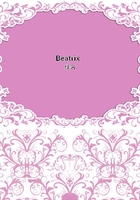
第7章 THE BARON, HIS WIFE, AND SISTER(1)
Early in the month of May, in the year 1836, the period when this scene opens, the family of Guenic (we follow henceforth the modern spelling) consisted of Monsieur and Madame du Guenic, Mademoiselle du Guenic the baron's elder sister, and an only son, aged twenty-one, named, after an ancient family usage, Gaudebert-Calyste-Louis. The father's name was Gaudebert-Calyste-Charles. Only the last name was ever varied. Saint Gaudebert and Saint Calyste were forever bound to protect the Guenics.
The Baron du Guenic had started from Guerande the moment that La Vendee and Brittany took arms; he fought through the war with Charette, with Cathelineau, La Rochejaquelein, d'Elbee, Bonchamps, and the Prince de Loudon. Before starting he had, with a prudence unique in revolutionary annals, sold his whole property of every kind to his elder and only sister, Mademoiselle Zephirine du Guenic. After the death of all those heroes of the West, the baron, preserved by a miracle from ending as they did, refused to submit to Napoleon. He fought on till 1802, when being at last defeated and almost captured, he returned to Guerande, and from Guerande went to Croisic, whence he crossed to Ireland, faithful to the ancient Breton hatred for England.
The people of Guerande feigned utter ignorance of the baron's existence. In the whole course of twenty years not a single indiscreet word was ever uttered. Mademoiselle du Guenic received the rents and sent them to her brother by fishermen. Monsieur du Guenic returned to Guerande in 1813, as quietly and simply as if he had merely passed a season at Nantes. During his stay in Dublin the old Breton, despite his fifty years, had fallen in love with a charming Irish woman, daughter of one of the noblest and poorest families of that unhappy kingdom. Fanny O'Brien was then twenty-one years old. The Baron du Guenic came over to France to obtain the documents necessary for his marriage, returned to Ireland, and, after about ten months (at the beginning of 1814), brought his wife to Guerande, where she gave him Calyste on the very day that Louis XVIII. landed at Calais,--a circumstance which explains the young man's final name of Louis.
The old and loyal Breton was now a man of seventy-three; but his long-continued guerilla warfare with the Republic, his exile, the perils of his five crossings through a turbulent sea in open boats, had weighed upon his head, and he looked a hundred; therefore, at no period had the chief of the house of Guenic been more in keeping with the worn-out grandeur of their dwelling, built in the days when a court reigned at Guerande.
Monsieur du Guenic was a tall, straight, wiry, lean old man. His oval face was lined with innumerable wrinkles, which formed a net-work over his cheek-bones and above his eyebrows, giving to his face a resemblance to those choice old men whom Van Ostade, Rembrandt, Mieris, and Gerard Dow so loved to paint, in pictures which need a microscope to be fully appreciated. His countenance might be said to be sunken out of sight beneath those innumerable wrinkles, produced by a life in the open air and by the habit of watching his country in the full light of the sun from the rising of that luminary to the sinking of it. Nevertheless, to an observer enough remained of the imperishable forms of the human face which appealed to the soul, even though the eye could see no more than a lifeless head. The firm outline of the face, the shape of the brow, the solemnity of the lines, the rigidity of the nose, the form of the bony structure which wounds alone had slightly altered,--all were signs of intrepidity without calculation, faith without reserve, obedience without discussion, fidelity without compromise, love without inconstancy. In him, the Breton granite was made man.
The baron had no longer any teeth. His lips, once red, now violet, and backed by hard gums only (with which he ate the bread his wife took care to soften by folding it daily in a damp napkin), drew inward to the mouth with a sort of grin, which gave him an expression both threatening and proud. His chin seemed to seek his nose; but in that nose, humped in the middle, lay the signs of his energy and his Breton resistance. His skin, marbled with red blotches appearing through his wrinkles, showed a powerfully sanguine temperament, fitted to resist fatigue and to preserve him, as no doubt it did, from apoplexy. The head was crowned with abundant hair, as white as silver, which fell in curls upon his shoulders. The face, extinguished, as we have said, in part, lived through the glitter of the black eyes in their brown orbits, casting thence the last flames of a generous and loyal soul.